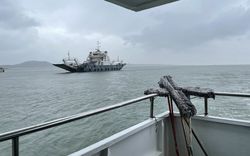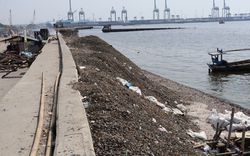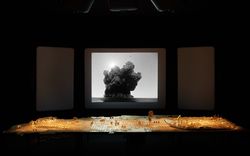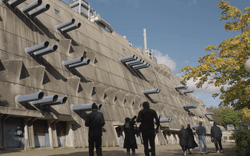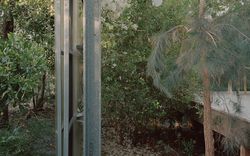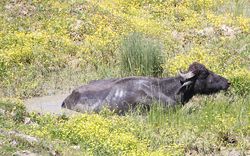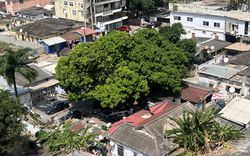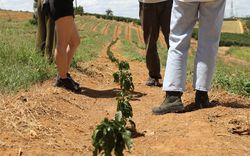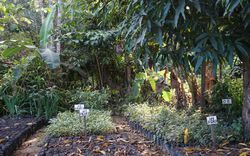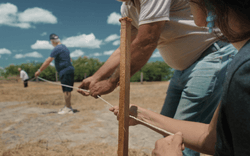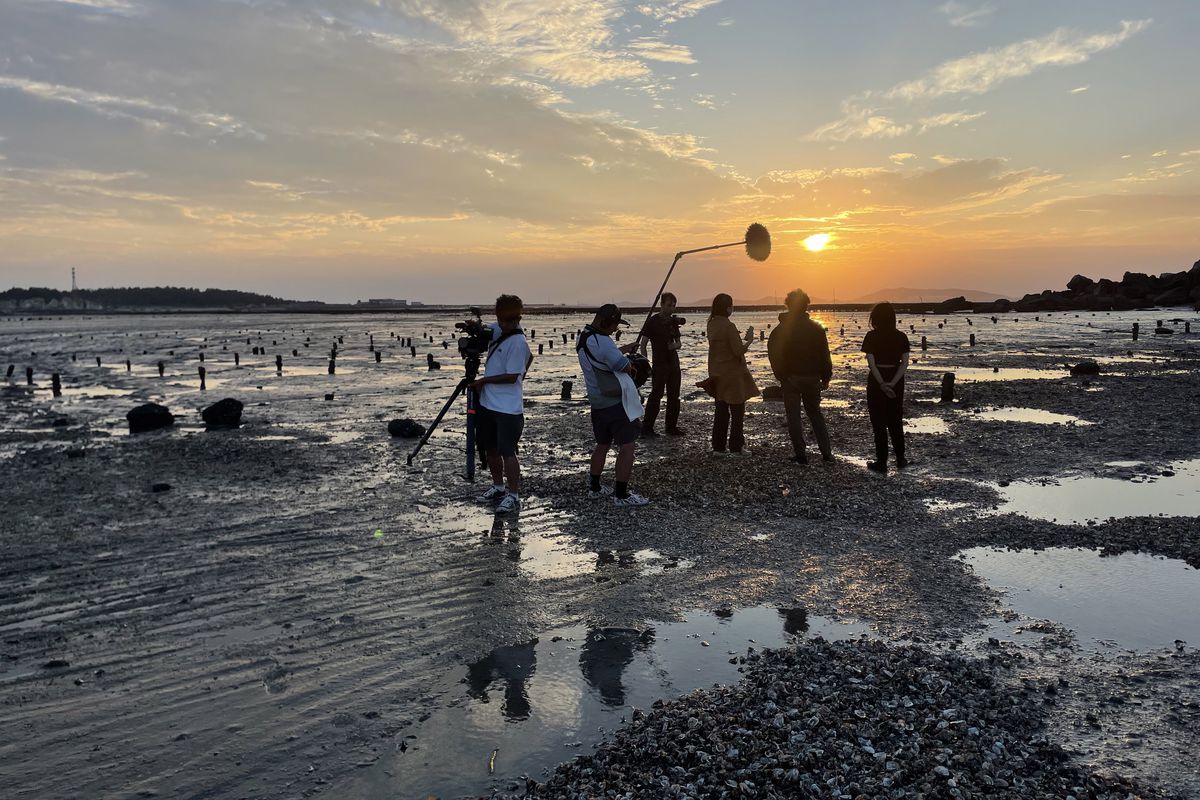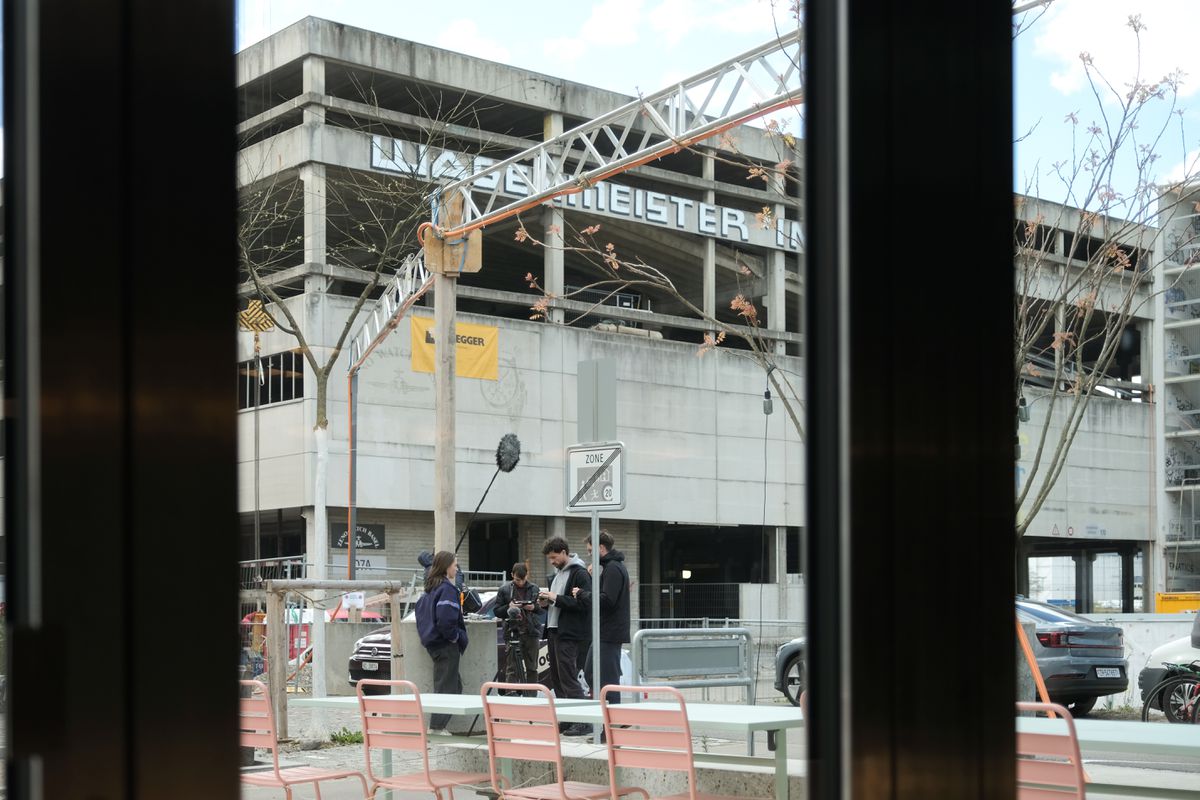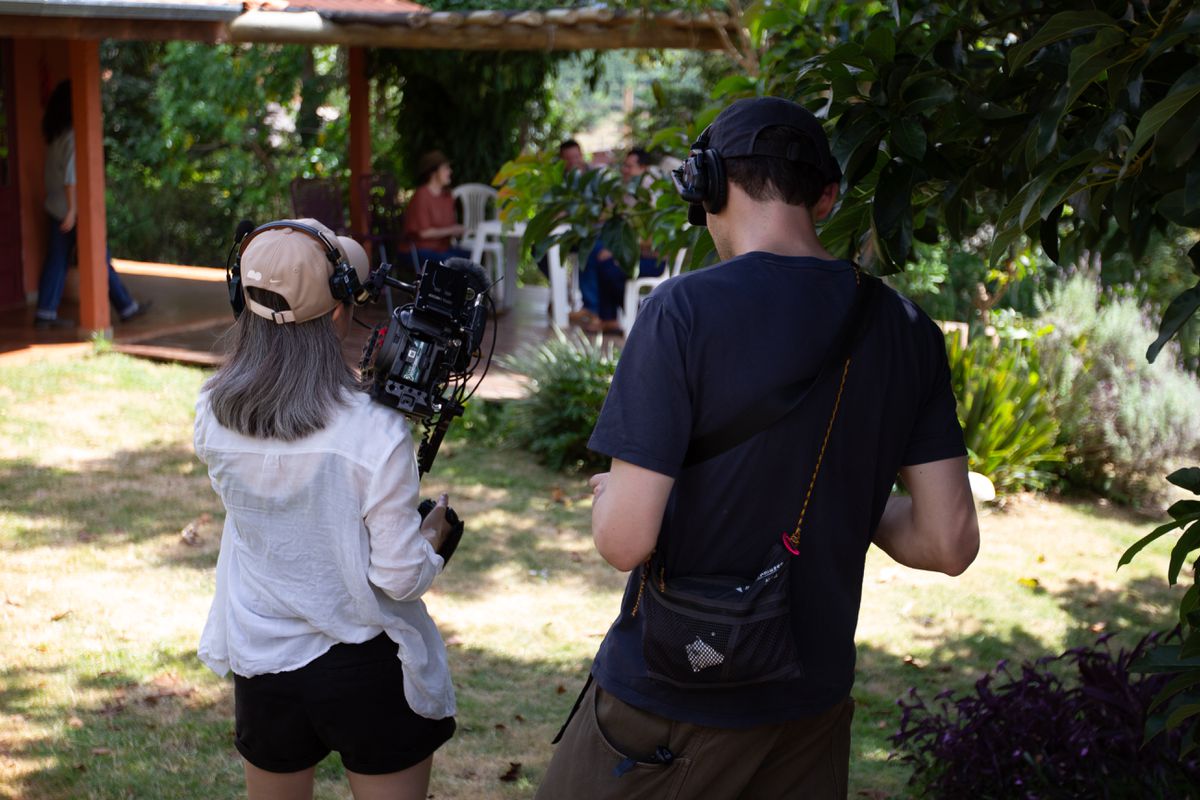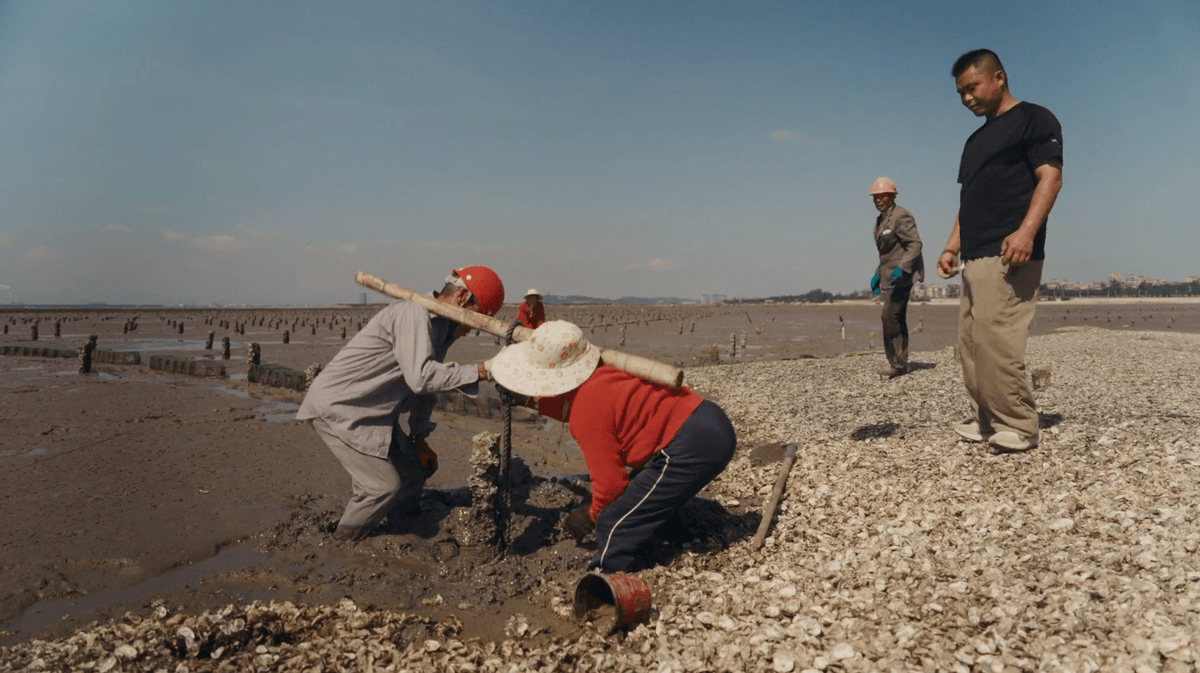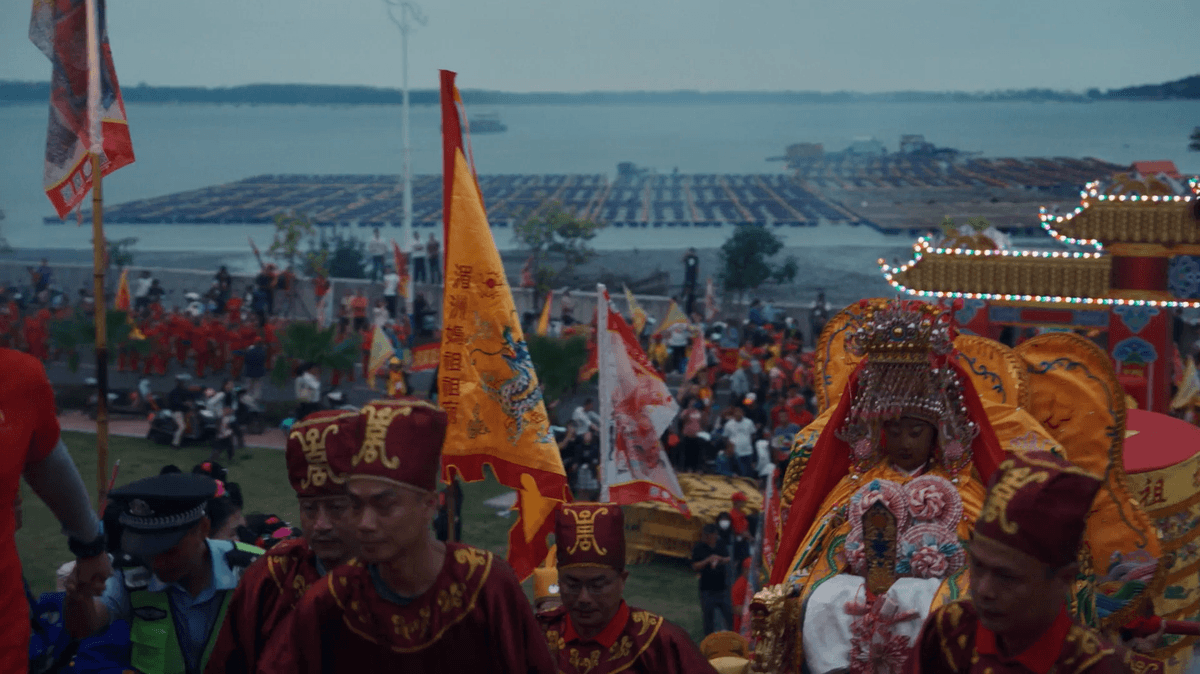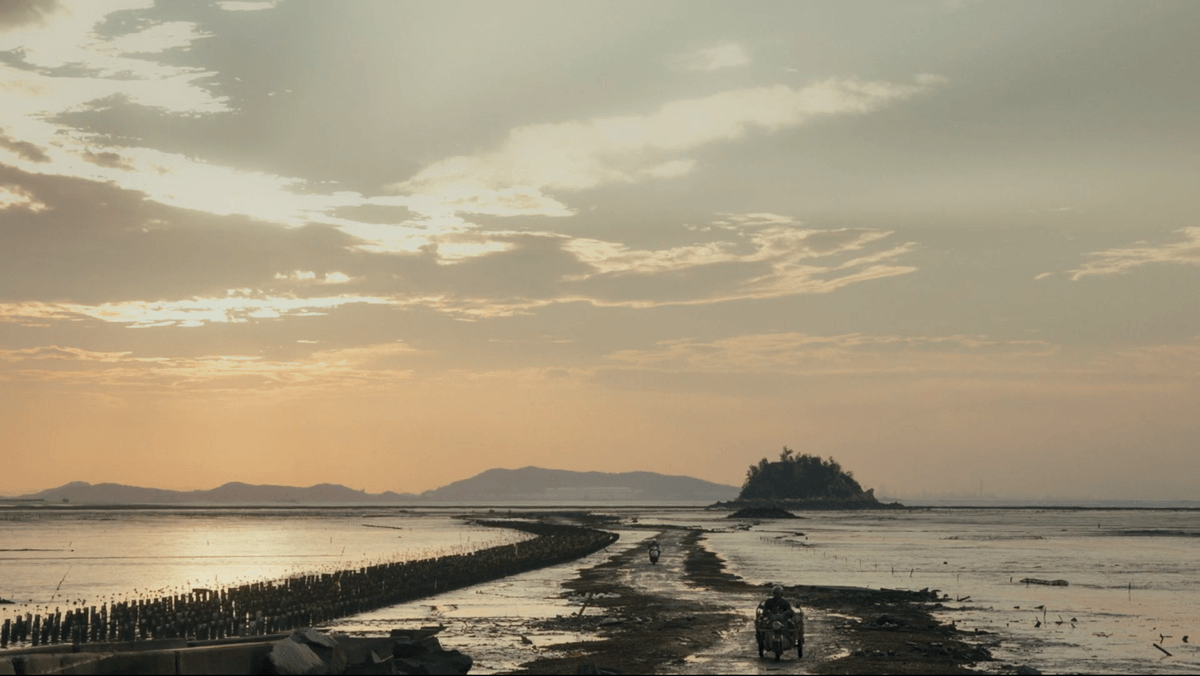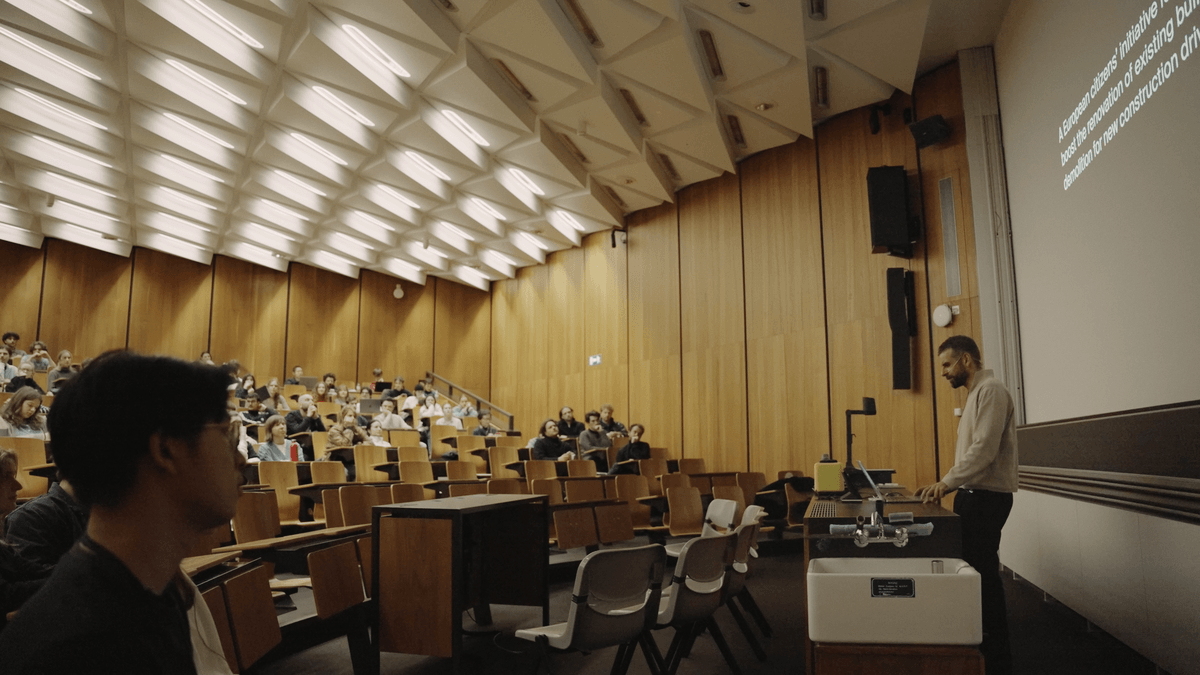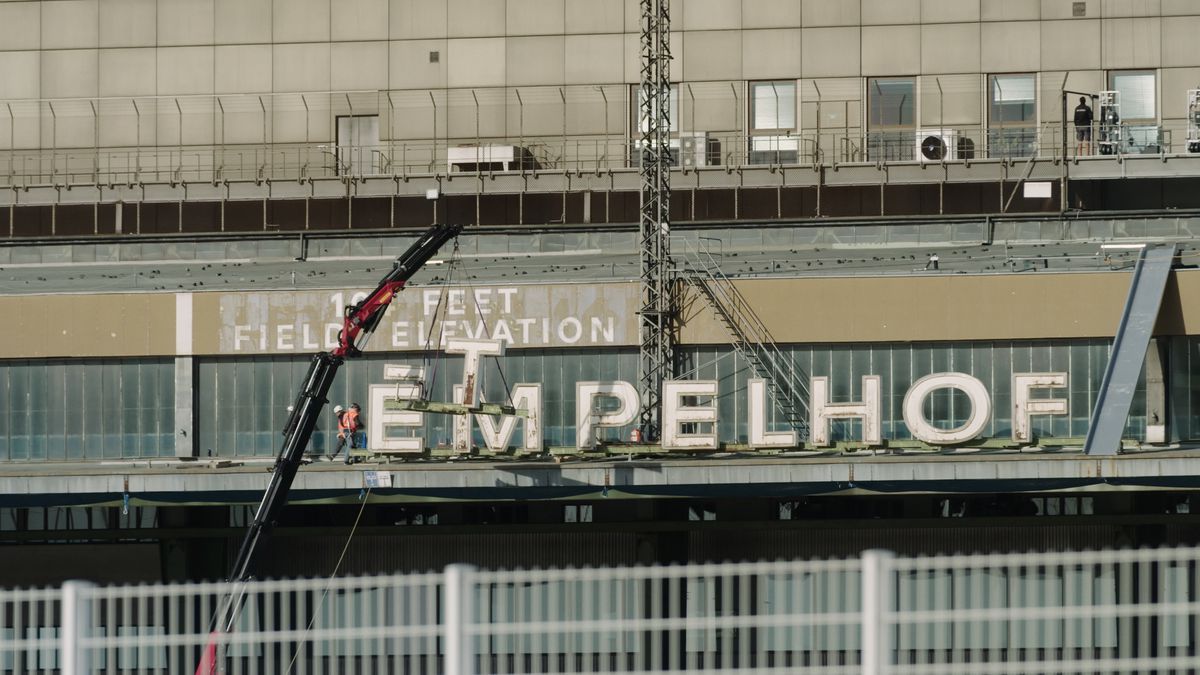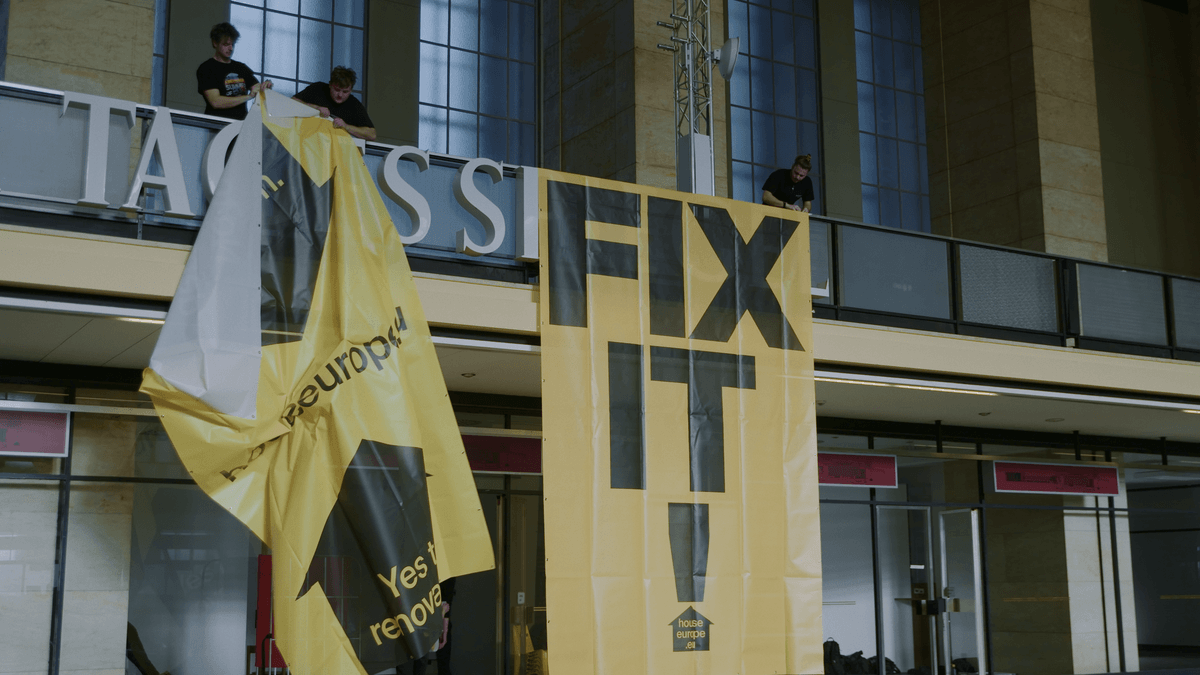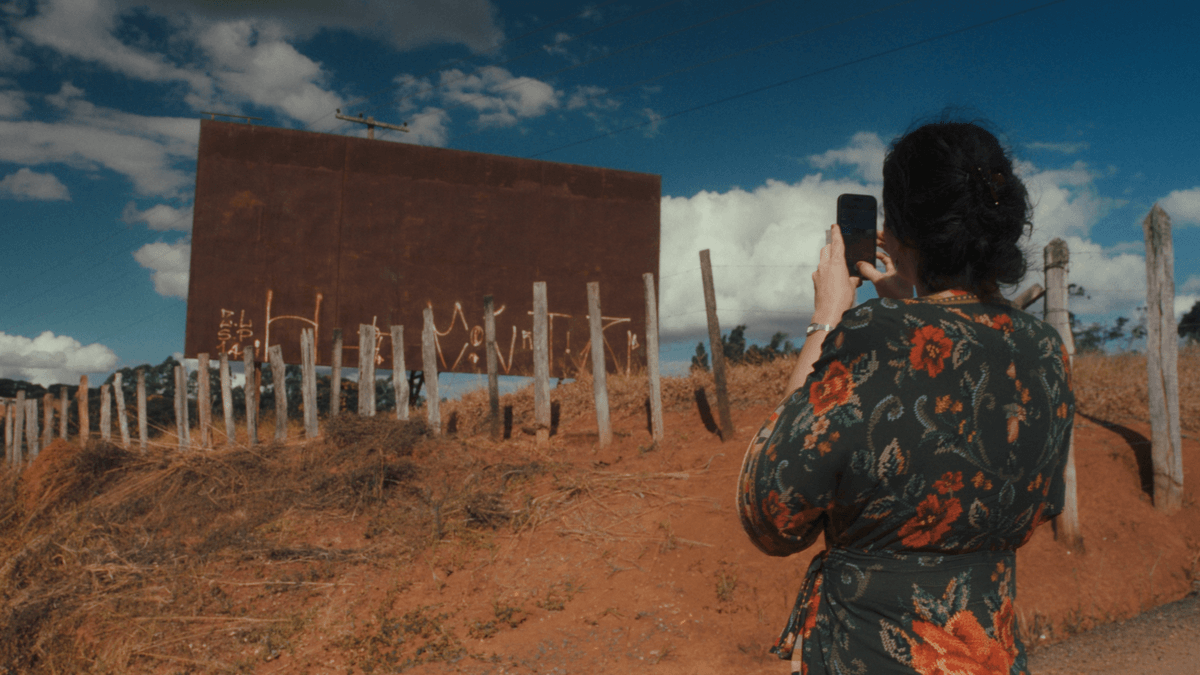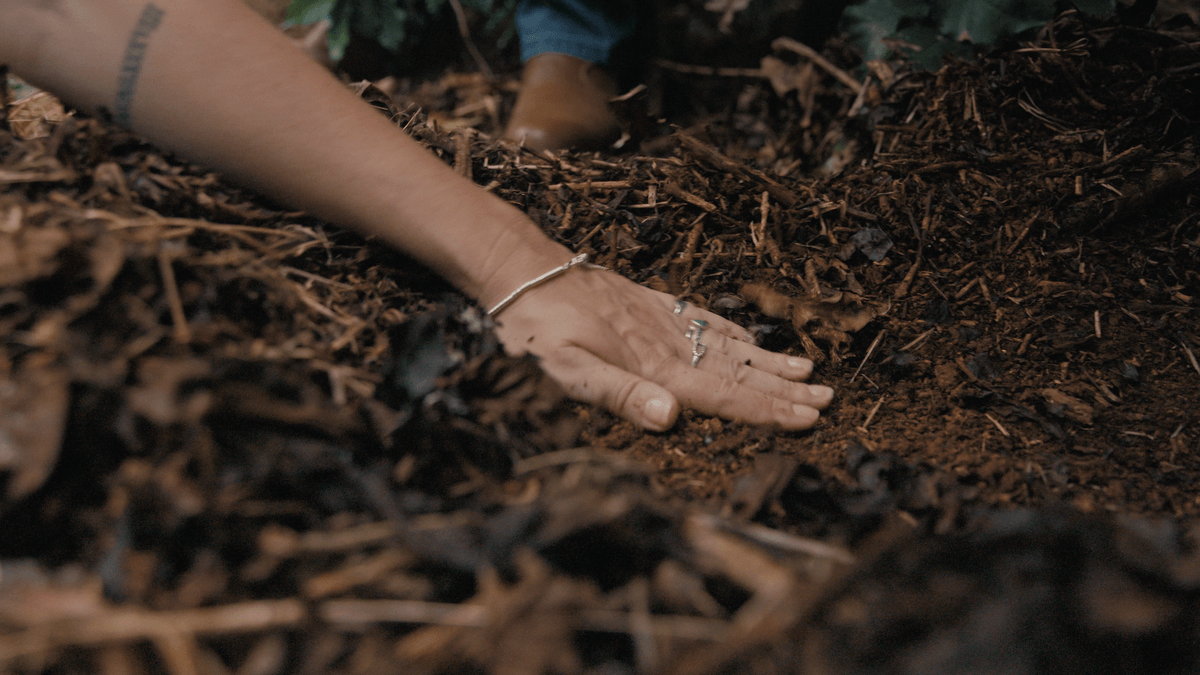Making Groundwork
Joshua Frank and Alexandra Pereira-Edwards in conversation
This article is published to mark the closing of Groundwork, a film and exhibition series exploring how architects situate themselves in relation to changing natural and disciplinary boundaries. The third and final chapter, With an Acre, is presented in our Main Galleries until 12 October 2025.
In the conversation that follows, the film’s director, Joshua Frank, speaks with CCA Editor Alexandra Pereira-Edwards about his practice and the making of the series. Documented through the narrative folds of cinema as research format—presented alongside artefacts, documents, specimens, and site fragments as evidences of an ongoing thinking process—the stories of Groundwork are excerpts of investigative and explorative journeys whose conclusive act—the final result—is yet to come, to be conceptualized, still open and under construction.
- APE
- Could you start off by telling us a little about the work you do and about how your involvement with this project kicked off?
- JF
- My background is in journalism, and that was kind of my entry point into documentary film. I’ve always gravitated more towards culture-oriented stories, and my foundation was working in small crew news-documentary setups. I worked for a long time in China, as well as in the US. Some of this work had a very different style from these films with the CCA, but there is, in a sense, still a consistent element of responsibilities of reporting and conveying information while achieving a certain cinematic aesthetic—and also a very on-the-ground aesthetic, one that is potentially rougher around the edges. As someone producing, directing, doing cinematography, and sometimes being in front of the camera, you learn very quickly to think about all the different aspects of how a film gets made—and you also understand better what you’re demanding of people when you’re asking them to participate and present their ideas on camera.
- APE
- Your mention of “rough around the edges” could definitely relate to the Groundwork series, which is about the process of making architecture, rather than the finished product. I would be curious to hear more about what that looks like: how do you go about conveying ideas that are nebulous or not fully formed? What does the research process look like from proposal or mood board to a fully finalized film series?
- JF
- One of the things that is particular about this project is that I’m not making a personal film—it’s a collaboration, it’s a commission. I am not an architect, nor am I a curator, but I get to collaborate with them. And so, on some level, we’re all asking each other together what we hope to achieve. I do a lot of research ahead of time and I also try to draw upon my own related filming experiences, to imagine what the film could really look like.
- JF
- For the Groundwork series, I was fortunate: the first film, Into the Island, is in China. I have extensive experience in China and understand the interesting and unexpected things that can happen in daily life there. I’d done a more journalistic film [for VICE] about coffee farming in China as well, which was useful for the third film, With an Acre.
The first thoughts that go through my head when I hear about these topics, whether it’s an island in China with Xu Tiantian, or renovation in Berlin with bplus.xyz, or being on a coffee farm in Brazil with Carla Juaçaba, are, what are the actions that need to happen in the film? And what do they look like? How would I like to treat them? What are the unexpected and unscripted things that I hope to capture?
That last point becomes a really interesting aspect of documentary filmmaking, where you’re trying to be as creative and open as you can about these unpredictable events that make a film exciting and fresh—but you have to think about how they might happen and then be ready to capture them when they do. For example, in To Build Law, the film with bplus.xyz, I wanted to bring out certain moments that felt like we were seeing unconventional or creative ways of engaging with the city, and maybe have that reflected in an evocative, surprising, even humorous way. We were lurking around Tempelhof Airport, and lo and behold, someone was windsurfing with a longboard on the runway. I didn’t know that the windsurfer was going to be there; you think about what you hope to witness and you set up the conditions, and by being prepared in this way, you often get “lucky.”
- APE
- Each of the three films has its own identity and set of questions, and yet it works as a series. Was that always in the front of your mind as you were working on each film, or were you really focused on the individual stories?
- JF
- The sense of cohesion in the series really comes from, or responds to, the curatorial approach, which involved looking at the early stages of architects’ processes of research and ideation, rather than the construction and completion of a building. We were also refining the series as it was developing. Into the Island, as an actual production, was probably the most chaotic, with the most moving parts. That ultimately becomes a part of the film’s concept as well.
We went from a film in China, where the island itself is a character and we’re trying to understand and reflect a contained geographic location as well as the people there, to the second film, To Build Law, where the scope expands to the continent of Europe. Where Into the Island downplays the presence of the architect in the landscape, To Build Law foregrounds bplus.xyz, architects who also make films themselves. This last aspect lent itself to an immediate shared understanding of how their story could be told through our film.
Another aspect we considered was the conceptual and aesthetic framework that we wanted to apply to these films. With Into the Island, we were thinking about the idea of cycles, and potentially forgetting that the architect is even present. The cyclical aspect is interesting because in the end, as a film, you can really pop in at any moment and get a sense of the atmosphere. To Build Law is almost the opposite. It’s really building in a chronological progression. We were thinking about it as a political campaign film. And in With an Acre, which is more meditative, there was this idea that instead of climactic moments, we’re almost retreating into dreamlike sequences, which create a sense of pacing without imposing a climactic aspect into the narrative.
- JF
- These ideas had to be very present before shooting. I mean, films cost money to make, and they involve a lot of people: not just in the production, but in the post-production as well. It’s about setting the conditions and having a very clear vision of what you would like, but also being able to adapt. Collaborating in the field with Francesco Garutti [Curator] and Irene Chin [Curatorial Assistant], we had conversations about when we needed to step in to provoke, question, or encourage the architects. We had to make sure that we were getting what we needed for the film, because we did have a limited amount of time. So that negotiation between observational reporting and active collaboration and discussion with our subjects is a part of making experimental documentaries that I find especially interesting and rewarding.
Because the practices featured in each film are so different, we anchored ourselves in what we wanted the films to feel like, which is very observational and not overly polished. We also tried to avoid anything that resembled an interview—which doesn’t mean that there isn’t directing in terms of trying to spark certain conversations, but it is a very distinct aesthetic choice that remains throughout the series. The way that we made the films is quite consistent. It was definitely a process of refining how we worked together within our crew and between Francesco, Irene, myself, and Camille Lavallée-Prairie [Production Manager], and we learned how to achieve what we wanted in a smoother way as the filming continued.
- APE
- Another thing that I see as a through line in the three films is that they’re all exploring an ecology of collaborators. They are decentring the architect as a singular person or firm and really thinking about all of these other people that are implicated in the making of architecture. So, I have a double question. First, how do you go about capturing that ecology of people? And second, how does that reflect back on your practice as a filmmaker, to work within a constellation of people to bring something to fruition?
- JF
- This larger ecosystem that allows architecture to happen is reflected very differently in each of the three films. In Into the Island, everyone is contributing just by virtue of their presence and their activities on the island. For To Build Law, it’s so collaborative within an assembly of architects also trying to reach a broader population. And then in Brazil, in With an Acre, we see much more clearly a client and architect relationship.
When it comes to the people responsible for making a documentary happen, it’s enormous.
For this project, it was my first time having a commission or brief where that creative collaboration between myself and the curators is so ongoing. In terms of the actual crew, it was also a really interesting experience finding the right team, because this is still a fairly unusual way of making films. It requires a very open kind of person to collaborate on this series.
We had an idea of what we wanted, but the goalposts were sometimes shifting or we were renegotiating or navigating what’s really best. From a cinematographic perspective, we’re getting deep into observing scenarios that may seem outwardly mundane, but are precisely the moments where ideas are percolating and coming together. Capturing these actions has to be done with a palpable spirit of attention and curiosity. Iris Ng, the cinematographer we worked with on With an Acre and To Build Law, for example, was just so interested in and committed to this process of collaboration and understanding. Not everyone works like that, especially coming from a journalism or conventional documentary background, where you have a responsibility to try and share people’s stories accurately, but ultimately the construction of the reporting can be relatively formulaic—you get your coverage and that’s that. Likewise, the editing plays an essential role in making a statement to the audience: that these early stages of architects thinking through ideas are just as compelling, consequential, and worthy of being documented as the process of completing an actual building. I was fortunate to work with three different editors, Kayla Fragman, Nora Tennessen, and Yiwei Chen, who in their own ways, helped crafted the stories of the three practices that were free to go in different directions while also maintaining a sense of intentionality and focus.
Making documentaries, in my opinion, requires nice people. People who are smart and curious, people who are also good at working fast. I find that you always get a lot of mileage when you’re filming with people—it’s tiring to be filmed, but if they see that the crew works really well together and works fast and is not… annoying, people recognize and appreciate it. And it’s one of the things that makes doing documentaries fun, because you earn the respect of the people that you’re filming as well. This was a case where the success of the films was contingent on the fact that it was a good fit, both in terms of the crew and how we worked together, and the openness of our subjects to trusting the vision we had.
Into the Island
Cinematographers: Joshua Frank, Dragon Li
Editor: Yiwei Chen
To Build Law
Cinematographer: Iris Ng
Editor: Kayla Fragman
With An Acre
Cinematographer: Iris Ng
Editor: Nora Tennessen
